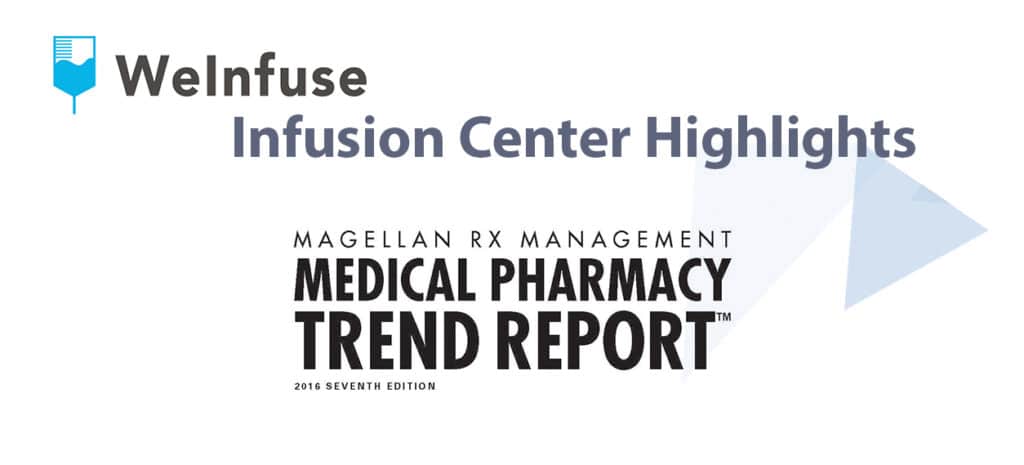At WeInfuse, we think the annual Magellan Trend Reports are manna from heaven. This year’s report is no different, and it’s full of gold nuggets that prove the physician / provider-based Infusion Center is the optimal site of care providing patients quality, convenient and cost-effective care. Whether you operate a stand-aloneInfusion Center or provide infusions as a part of your practice, the entire report is a MUST read.
How can you use this years report?
- Use it when advocating for your Infusion Center and the delivery channel at large
- Use it to negotiate with your payers for better rates since Infusion Centers are the proven optimal site of care.
- Be a more informed administrator or executive by understanding the current trends and changes in this dynamic industry.
Below are some important highlights from the report that pertain to our niche, the non-chemotherapeutic provider-based Infusion Center:
Executive Summary (page 3)
- For commercial, medical benefit drug cost is often more than double in the hospital outpatient setting versus the physician office
Biologic Drugs for Auto-Immune Disorders (BDAIDs) (page 23)
- BDAIDs (namely, Remicade and Orencia) remained a significant driver for payers, but utilization by the site of service experienced the first trend toward the most cost-efficient provider, the physician office (pg 23) [for the overall site of care trends see Medical Benefit Provider Landscape]
- BDAIDs are used to treat a variety of disorders including therapies for ankylosing spondylitis, Crohn’s disease / ulcerative colitis, psoriasis / psoriatic arthritis, rheumatoid arthritis, lupus, multiple sclerosis, and several others
- Commercial claim and unit costs in the hospital outpatient setting were more than double the physician office for 2 frequently used BDAID agents: Remicade and Orencia. For Medicare, claim and unit cost were relatively similar across 3 the three main sites of service: Home Infusion, Hospital Outpatient and Physician Office
Medical Benefit Drug Management (page 43)
- To control the costs of specialty drugs, health plans implemented several methods including step edits, prior authorization (PA), and rebating
- Short of a drug formulary, health plans may preference a medical benefit product within a disease category through tools such as policy criteria, provider reimbursement, step edits, etc.
- In 2016, 86% of health plans, which made up 93% of lives, had some form of product preferencing in place
Medical Benefit Provider Landscape (page 53)
- Hospital Outpatient setting is typically the highest cost setting for administration of medical benefit drugs
- Consistent with previous year’s reports and despite the physician office being the most cost-effective site of care, the trend is shifting away from the physician office and toward the hospital outpatient. Several reasons may be contributors: practice consolidation, decreased reimbursement to physician offices, and large health systems continuing to expand and acquire groups and services
Medical Benefit Drug Pipeline (page 66)
- The amount of billion-dollar medical pharmacy drugs is expected to increase from 18 to 28 by 2020.
- As the list continues to expand, payers will need to expand their focus and find comprehensive solutions to manage these specialty medications.

